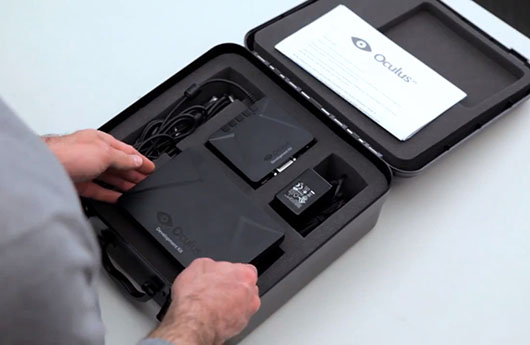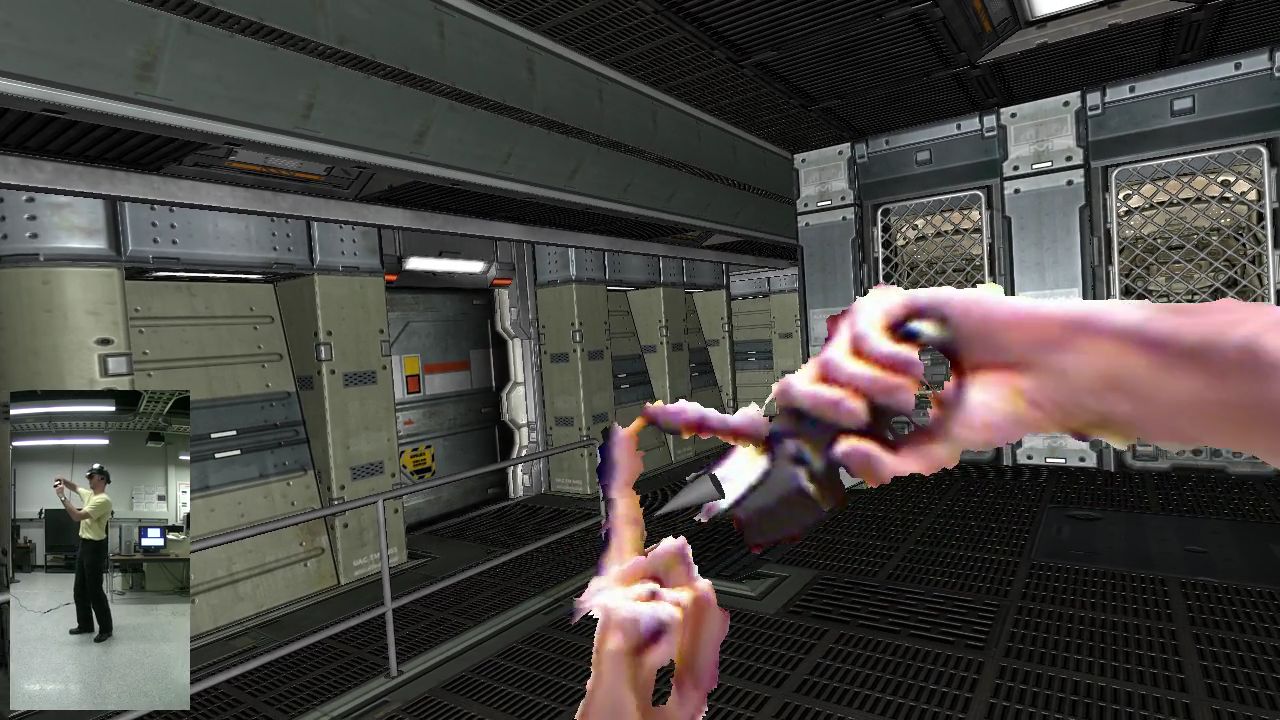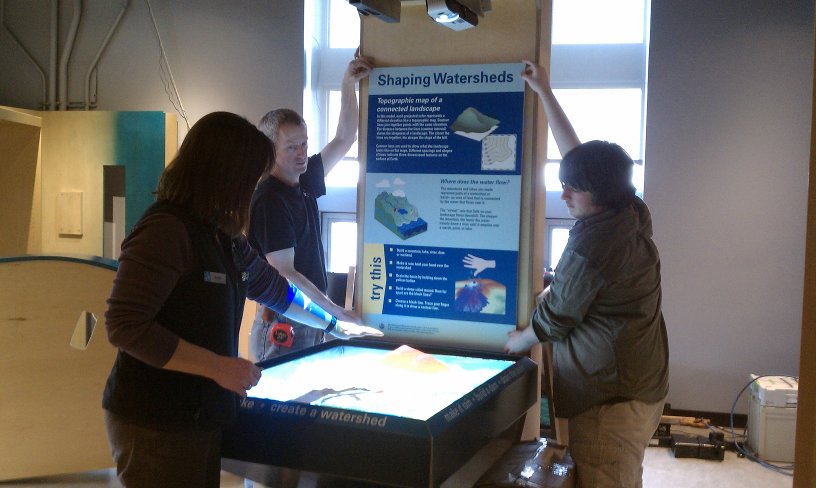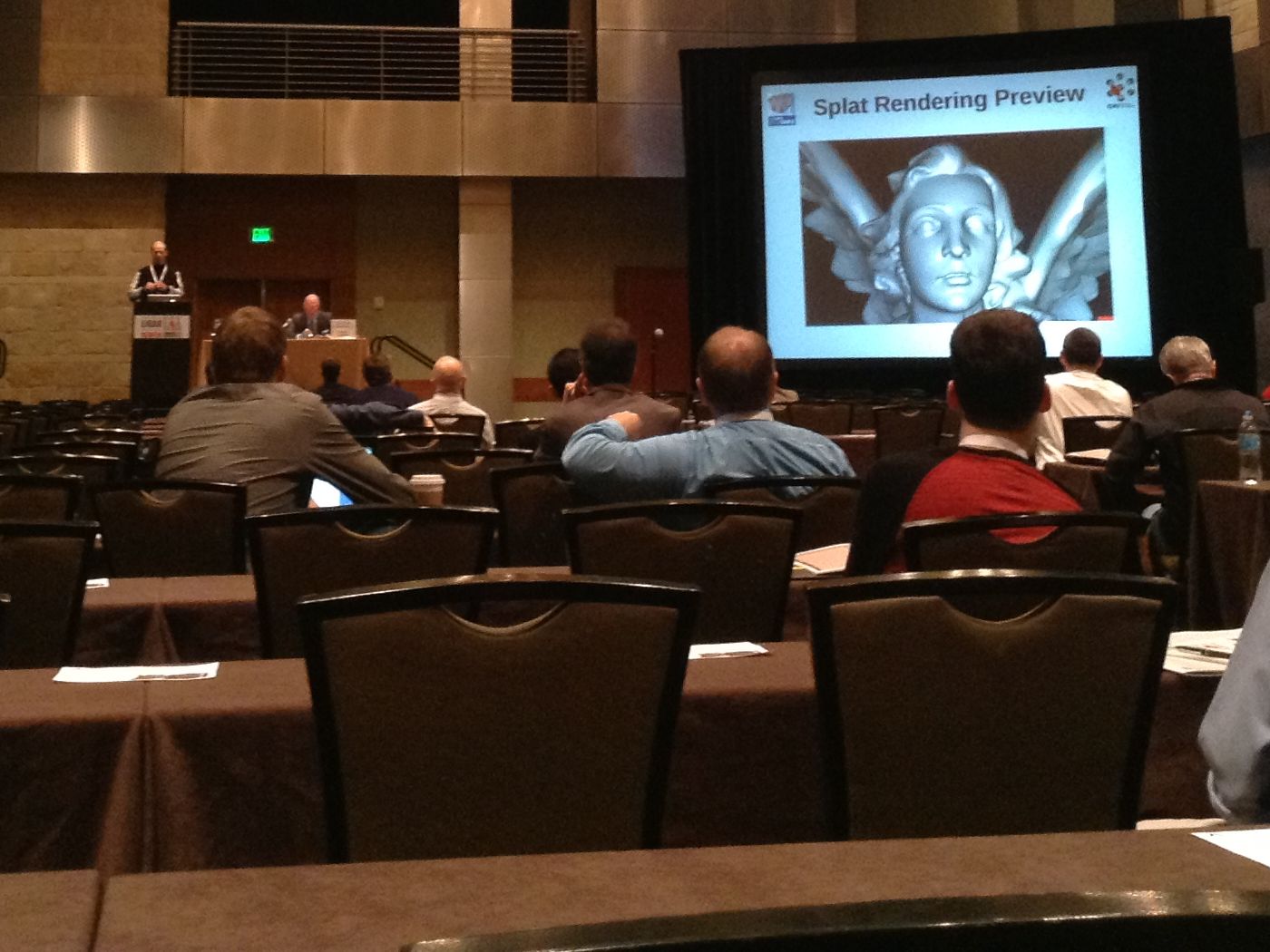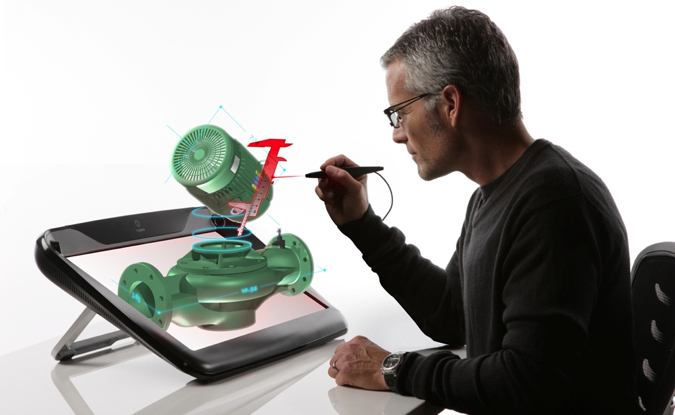I went to zCon 2013, the zSpace developers conference, held in the Computer History Museum in Mountain View yesterday and today. As I mentioned in my previous post about the zSpace holographic display, my interest in it is as an alternative to our current line of low-cost holographic displays, which require assembly and careful calibration by the end user before they can be used. The zSpace, on the other hand, is completely plug&play: its optical trackers (more on them below) are integrated into the display screen itself, so they can be calibrated at the factory and work out-of-the-box.

Figure 1: The zSpace holographic display and how it would really look like when seen from this point of view.
So I drove around the bay to get a close look at the zSpace, to determine its viability for my purpose. Bottom line, it will work (with some issues, more on that below). My primary concerns were threefold: head tracking precision and latency, stylus tracking precision and latency, and stereo quality (i.e., amount of crosstalk between the eyes).


